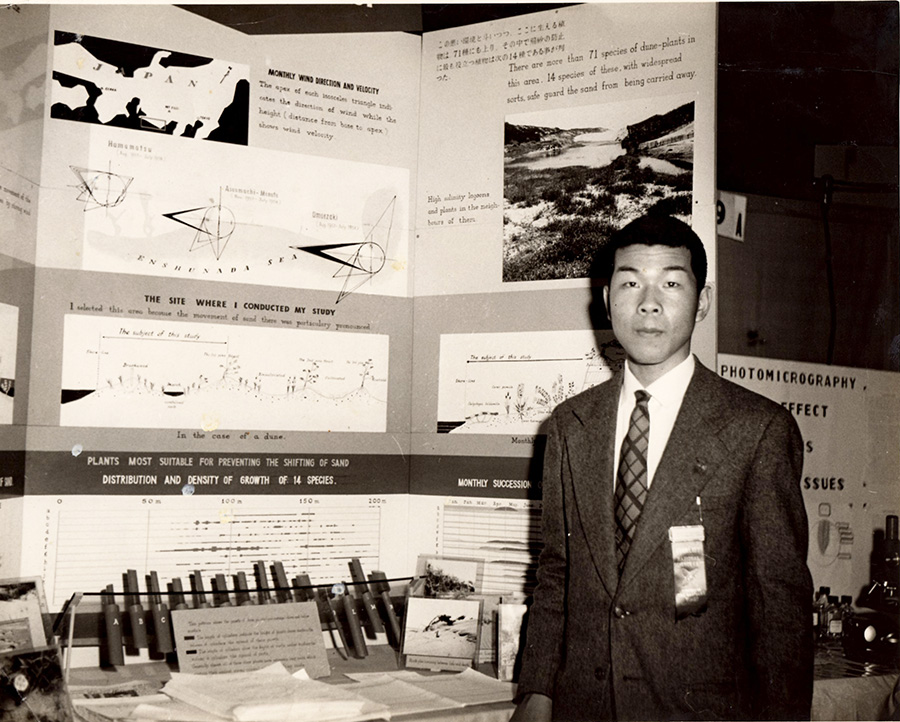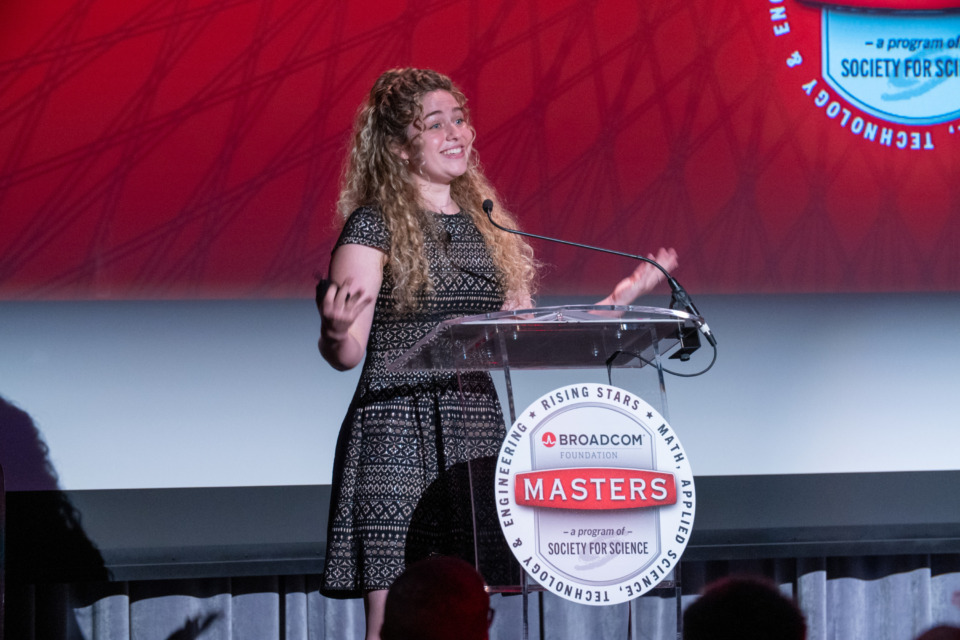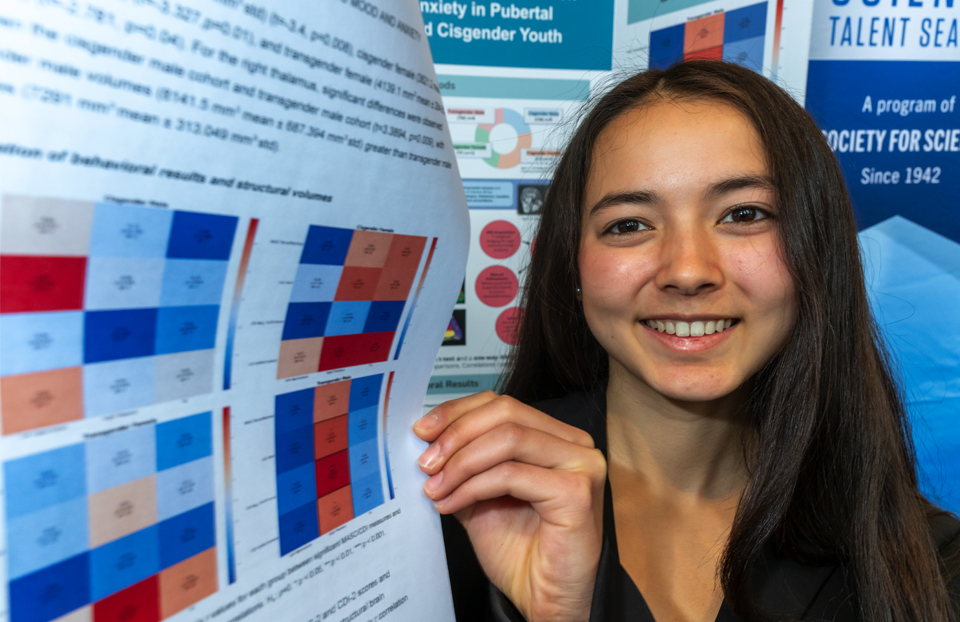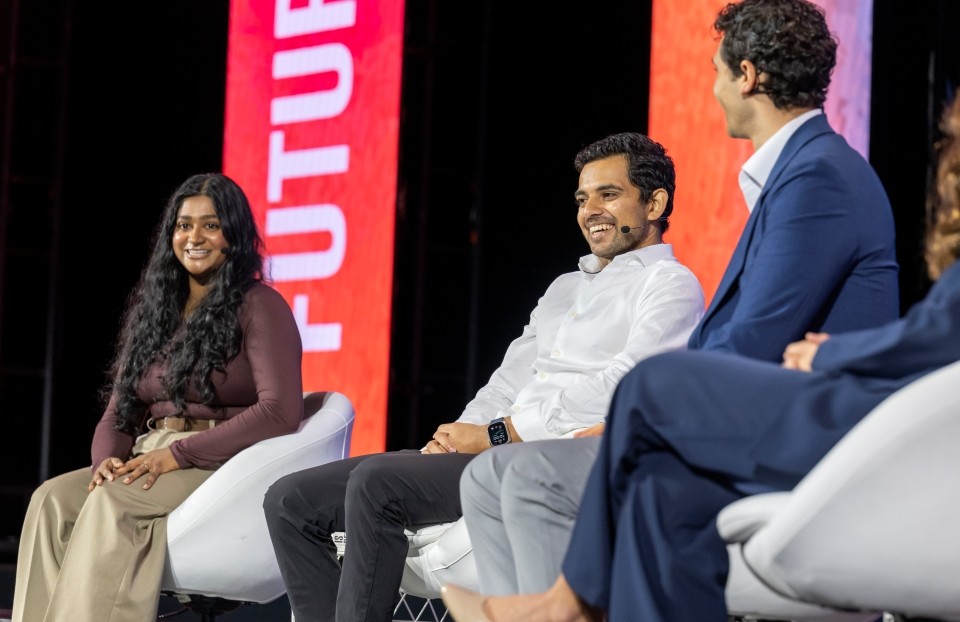The importance of science mentorship

Masayuki Mac Takahashi, a Society alum of the 1959 National Science Fair competition (now the Intel International Science and Engineering Fair), returns to judge projects at Intel ISEF. He judged at this year’s competition in Los Angeles.
Dr. Masayuki is one of seven directors of the Japan Science Society. In the 1959 competition, held in Hartford, Connecticut, he won the 3rd place award with his study of “Dune plant ecology on the Enshunada coast.”
Read on to learn how Masayuki is working to bring mentorship to Japan, especially in STEM education and research.
WHY HE RETURNS TO JUDGE AT INTEL ISEF: I have had the experiences of being an Intel ISEF judge in Botany and Plant Sciences three times in the past, as a Special Awards Judge in 2004 and Grand Awards Judge in 2005 and 2013. From my experiences as an Intel ISEF judge, I have recognized the current state of high school education outside of Japan, particularly supervising the STEM research of high school students.
The common understanding of ‘mentor’ in Japanese society is extremely poor.
In Japan, research by high school students is supervised by high school teachers with no experiences of science research. This is because the basic objective of education up to high school is focused on teaching the necessary content and techniques for each grade; not on developing the abilities of each student. This has been stated in our laws. I have learned from the experiences as an Intel ISEF judge that most research carried out by high school students [in other countries] is supervised by professional scientists or engineers as a mentor.
WHY SCIENCE FAIRS LIKE INTEL ISEF ARE IMPORTANT: I feel that it will be a wonderful experience for high school students to recognize the level of their new findings with other students in the world. I am sure that such an experience could stimulate students greatly, without question.
HOW HIGH SCHOOL SCIENCE RESEARCH DIFFERS IN JAPAN: I have noticed at least four serious problems in high school student research supervised by teachers who are not professional scientists. 1. There is no or extremely poor reviewing of the research subjects and there is little objectivity; 2. Students create significant results with poor data and analysis; 3. Students use poor and insufficient data collections, as well as not repeating experiments and even fabricating data; 4. Students often use data and results from other researches, sometimes without citation; and so on. All of this is common knowledge of what shouldn’t be done in professional research.
The popularization of mentorship for supervising science research of high school students is essential and urgent in Japanese society.
WHY MENTORS IN SCIENCE RESEARCH ARE IMPORTANT: I strongly believe that the popularization of mentorship for supervising science research of high school students is essential and urgent in Japanese society. The common understanding of “mentor” in Japanese society is extremely poor, not only in science but also in almost all other areas. High school students completing science research have had serious problems because of a lack of or extremely poor mentorships in Japan.
High school students who have interests in STEM should have suitable mentor(s) for supervising them and teaching them how to do science research. This is quite important for carrying out real research in science.
I started the ‘Science Mentor Program,’ supervising high school students in how to carry out science research.
We registered the trademark “Science Mentor” in 2014 [to help us with this]. With the nonprofit Japan Science Society, I started the “Science Mentor Program” in 2013, supervising high school students in how to carry out science research. The program has been greatly welcomed by all mentors, university professors, research scientists, as well as many teachers at high schools.
HIS MOST MEMORABLE MOMENT AT THE 1959 NATIONAL SCIENCE FAIR: I recognized the high level of science research at the fair, and was greatly encouraged to become a professional ecological research specialist in the future.
HOW HE BECAME INTERESTED IN STEM: My elementary school teacher discovered my interests in science and pointed it out to my mother when I was in grade 3. Then I started scientific observations on wild plants, and grew my interests in the ecological studies of plants.
Without my experiences [at the National Science Fair], I am sure I would have had to take a different path than research science.
My father was not pleased for me to take botany at the university because there was no guarantee of finding a job after graduation. But he finally agreed with my wishes as well as recognized my experiences at the National Science Fair. Without my experiences there, I am sure I would have had to take a different path than research science.
After obtaining a Ph.D. in plant ecology, I became a postdoctoral fellow supported by the Canadian Government. I spent 6.5 years at the University of British Columbia. Then I went back to Japan and was an associate professor at Tsukuba University for eight years, followed by 19 years at the University of Tokyo as a professor.


